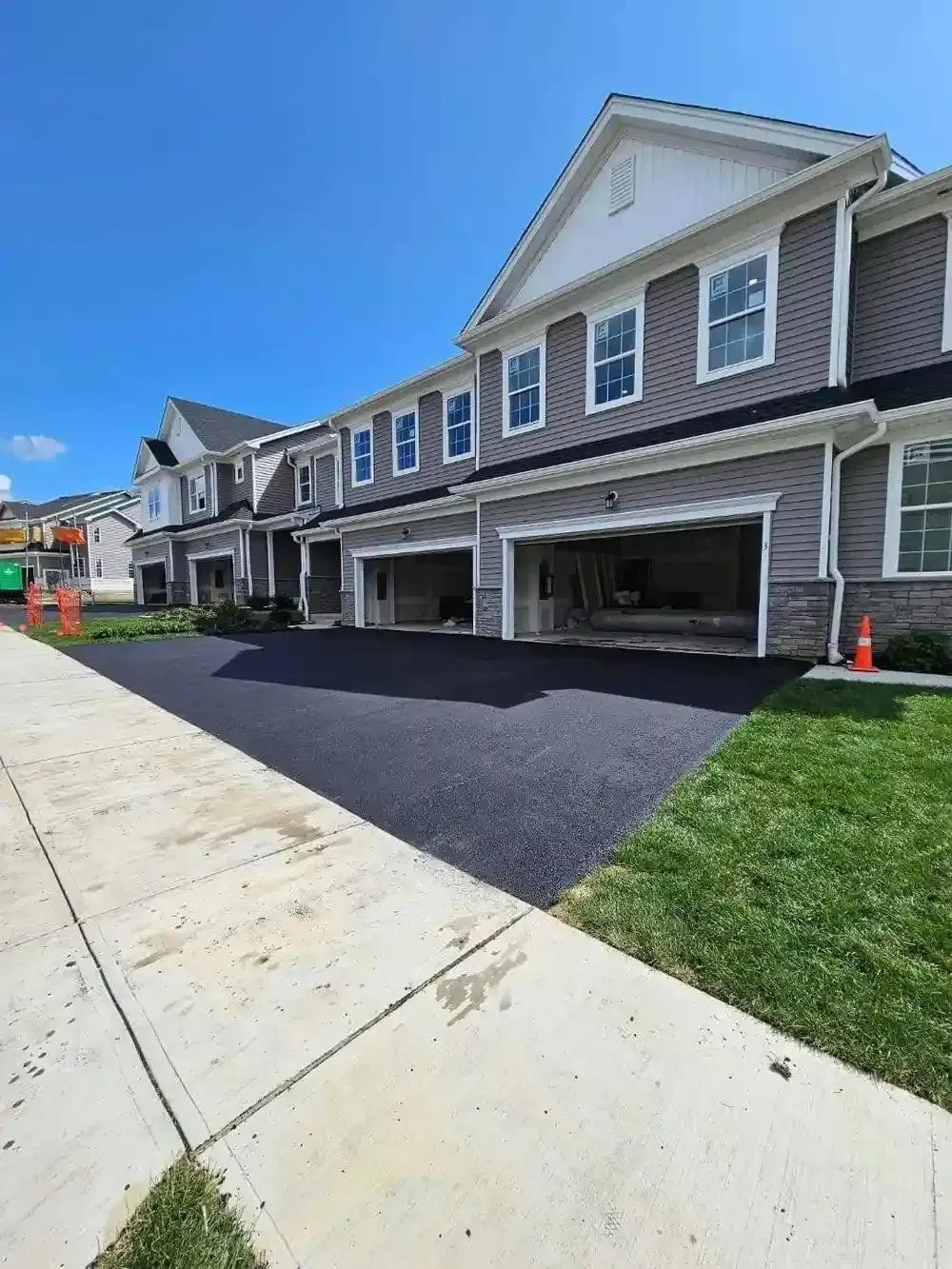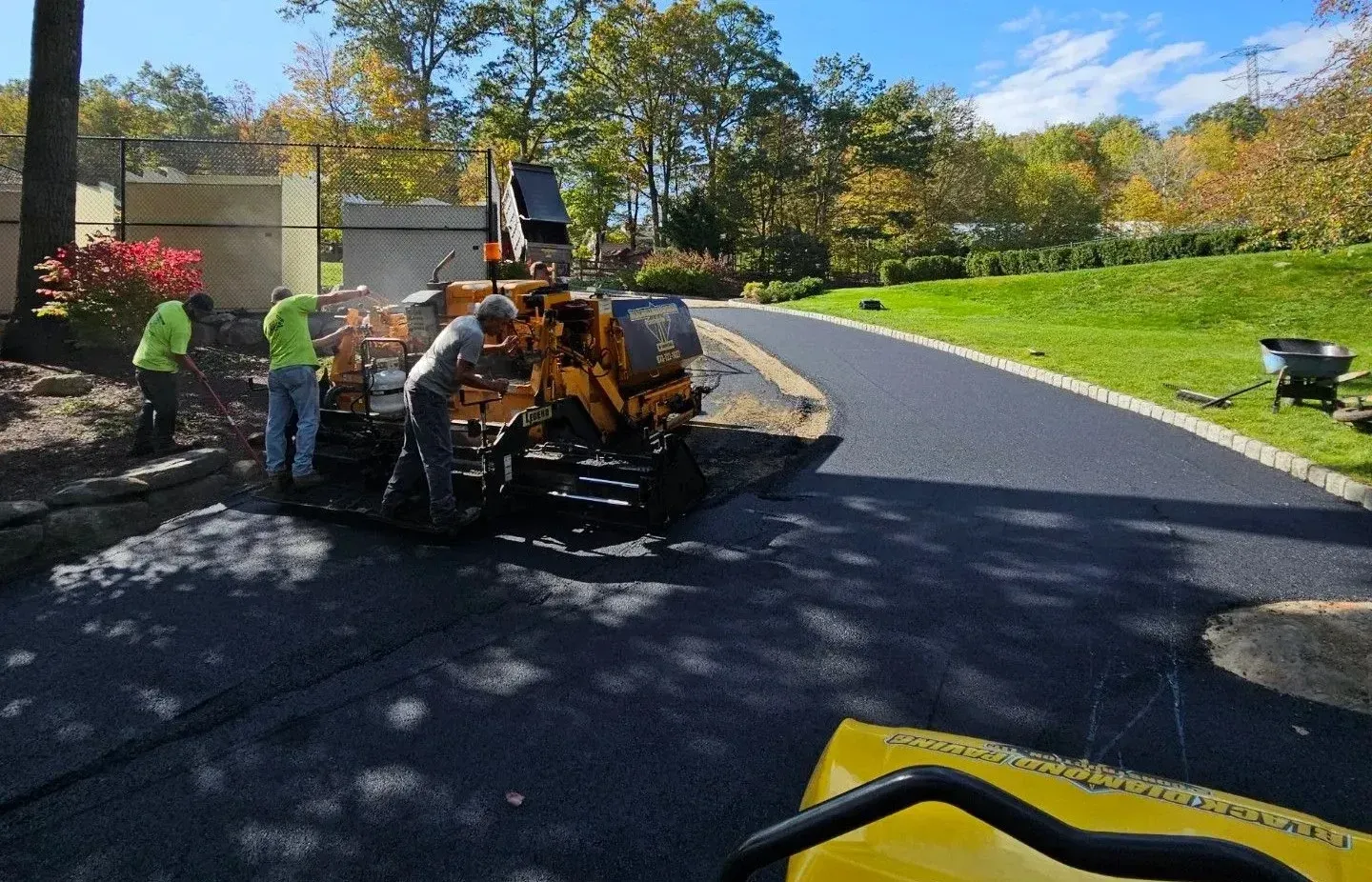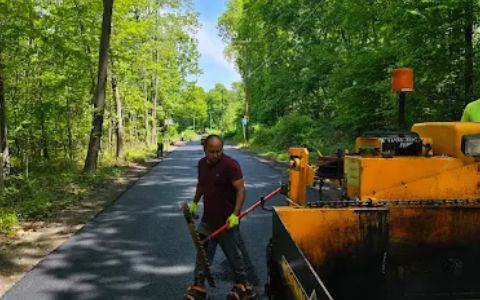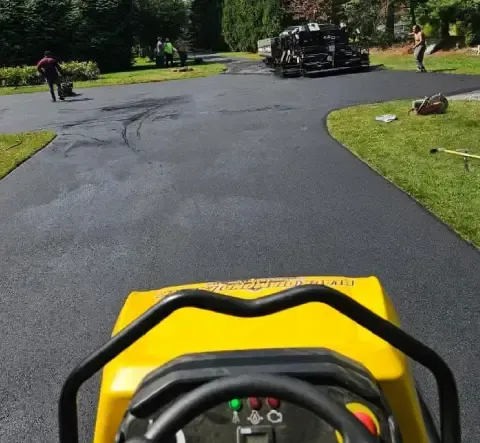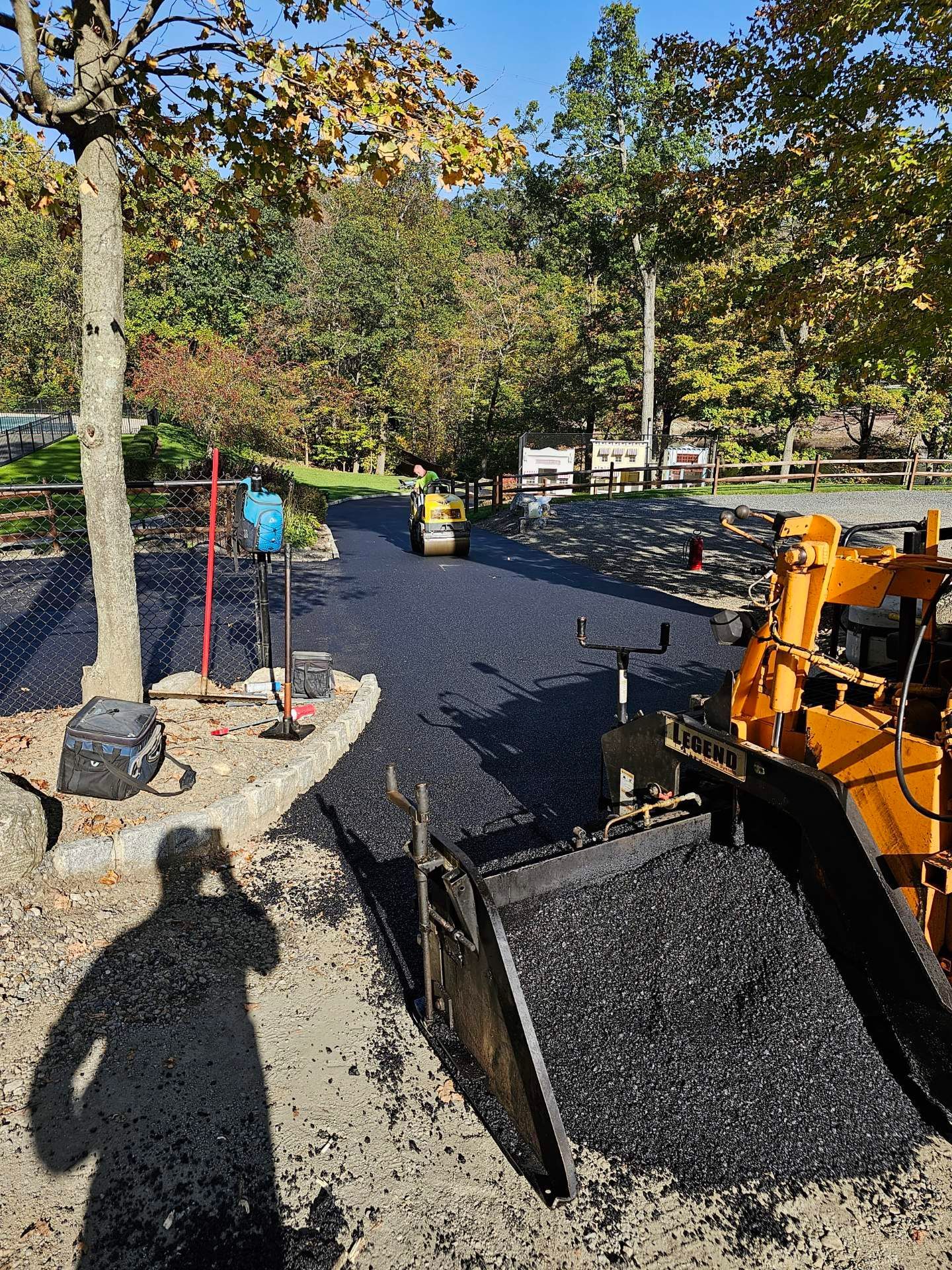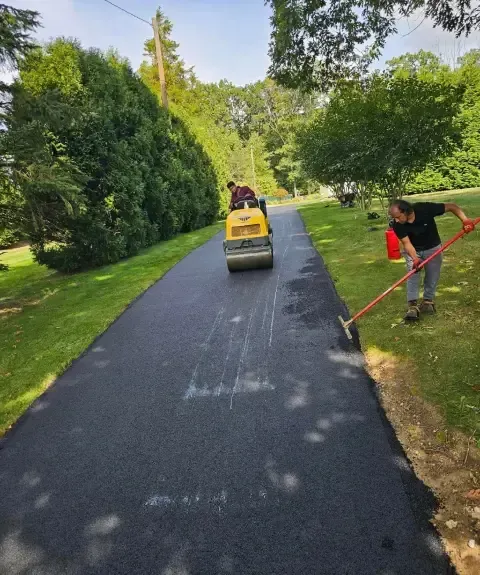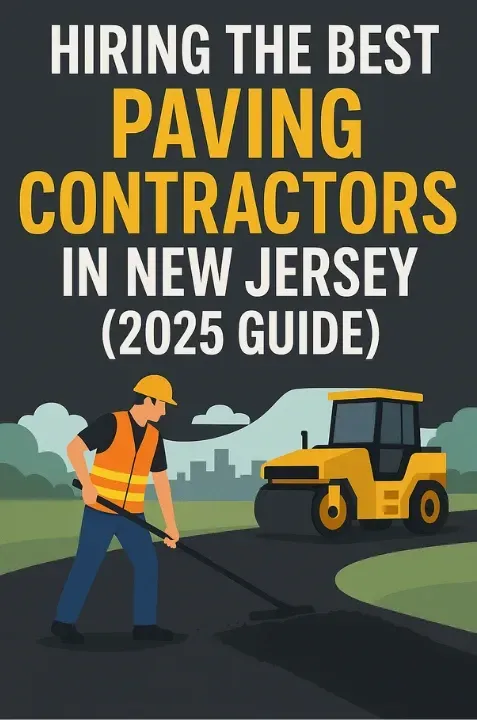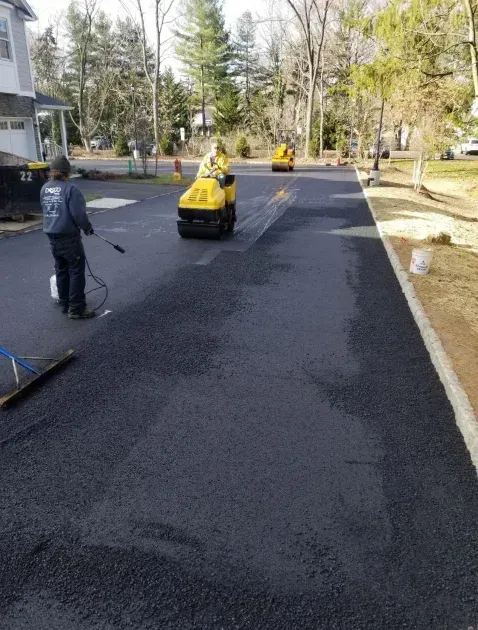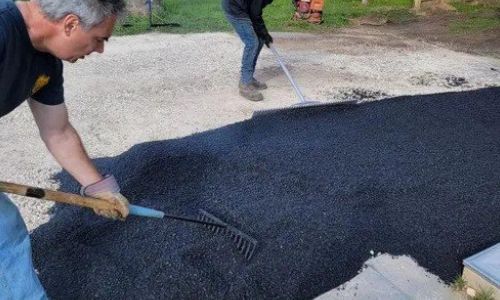Common Asphalt Issues and How to Address Them
No one gives their driveway or parking lot much thought until something goes wrong. You notice a crack here, a dip there, maybe a few puddles after the rain, and suddenly it’s like, wow, when did this happen? Asphalt looks tough (and it is), but it’s not invincible. It’s a living surface in a way — it expands, contracts, flexes, and ages. And just like anything that takes a daily beating from weather, weight, and time, it’s bound to show signs of wear.
But here’s the good news: most of those problems are totally preventable. You just have to catch them early, do the right kind of maintenance, and maybe not ignore that small crack that’s been there “for a while.” Let’s go through some of the most common asphalt issues you’ll run into and what you can do to keep them from turning into expensive headaches.
1. Cracking
Cracks are a warning sign. There are all kinds of them: longitudinal cracks that run along the pavement, alligator cracks that look like scales, edge cracks near the borders — each one telling a slightly different story.
Most cracks happen because of stress and age. Asphalt flexes under pressure, but over time, that flexibility wears out. Add in water sneaking underneath, freezing in winter, and expanding — that’s when the damage occurs.
How to avoid it:
Seal your driveway every few years. Seriously, this step alone saves people thousands. Sealcoating keeps moisture out, helps reflect UV rays, and slows down the whole aging process. Also, make sure the base underneath was done right — a weak foundation will cause problems forever.
2. Potholes
If cracks are a warning, potholes are the full-blown problem. They usually start small — water gets into cracks, freezes, expands, and weakens the material. Then traffic or weather makes it collapse. Before you know it, you’ve got a hole big enough to twist an ankle or wreck a tire.
How to avoid it:
The trick is to never let cracks get that far. Filling them early stops the cycle. If potholes do form, patch them quickly — cold patches work for small ones, but bigger spots might need professional repair. And again, it all comes back to that base layer. A solid foundation keeps everything together longer.
3. Drainage Problems
Here’s something most people don’t think about: water doesn’t just sit there harmlessly. If it’s pooling on your driveway or lot, it’s doing damage every minute it stays. Standing water seeps through tiny gaps, weakens the layers below, and — you guessed it — leads to cracks and potholes.
How to avoid it:
Proper grading is everything. When your asphalt was installed, it should’ve been sloped slightly to let water flow away. If not, you may need to regrade or install drains in low spots. And if you’re just now planning a new driveway, tell your contractor you want good drainage from the start.
4. Oxidation and Fading
Have you ever noticed how new asphalt looks deep black and rich, then slowly turns grey and dull? That’s oxidation. The sun’s UV rays dry out the oils that keep asphalt flexible. Over time, the surface becomes brittle, where small cracks form and water creeps in.
How to avoid it:
This one’s easy — sealcoating again. It’s like sunscreen for your driveway. Every two to three years, it keeps the color darker and the surface healthier. Avoid harsh chemicals or power washing too hard, as that can strip away the protective oils faster.
5. Raveling
Raveling is what happens when the surface begins to lose its aggregate. Aggregates are those small stones and sand particles that give asphalt texture. It starts small. Then the surface feels rough, loose gravel shows up, and before you know it, your driveway looks more like a dirt road.
How to avoid it:
Poor compaction during installation is a big reason this happens. If the mix wasn’t right or it wasn’t laid properly, the top layer just doesn’t hold together. Once again, sealcoating and regular inspections are your best friends. Catch it early, and a thin overlay might fix it. Wait too long, and you’ll be repaving.
6. Oil and Gas Spills
You park your car, it leaks a few drops of oil or gas every week, and nobody thinks much of it. But petroleum products actually break down asphalt binders over time. You’ll start to see soft spots, stains, and crumbling patches.
How to avoid it:
Clean spills immediately. A quick scrub with a degreaser or even dish soap and water works fine for fresh spots. For older stains, you might need a small patch repair. Keeping your driveway clean is not just for looks — it literally keeps it stronger.
7. Tree Roots
Trees are beautiful, but those roots don’t care about your driveway. Over time, they push upward, cracking and lifting the surface. Once that happens, it’s nearly impossible to fix without cutting into the pavement.
How to avoid it:
If you’re installing new asphalt, avoid planting trees too close — at least 10–15 feet away. For existing driveways, you can add root barriers underground to redirect growth. Catch it early, and you’ll save yourself a full replacement later.
8. Poor Installation
Sometimes, the problem isn’t age, weather, or traffic — it’s just bad work. If the contractor cut corners, i.e., didn’t compact the base enough, or used a weak mix, the result will be cracking, sinking, uneven spots, and repairs that never seem to last.
How to avoid it:
Hiring the right expert is quintessential. Ask for references, check reviews, and make sure they’re licensed and insured. A good crew won’t rush the prep work, because that’s what keeps your driveway or lot solid for 20+ years.
A Little Maintenance = Long-lasting Durability
Asphalt is strong, but it’s not set-and-forget. Like anything else exposed to the elements, it needs a little care. Seal it, clean it, keep an eye out for changes, and fix small issues before they turn big. If you stay on top of maintenance, your asphalt surface can last decades — smooth, safe, and looking sharp.
And if you’re not sure what condition yours is in, it never hurts to get a quick inspection. Sometimes a professional eye can spot problems you can’t.
Frequently Asked Questions (FAQs)
1. How often should I seal my asphalt driveway?
Every 2–3 years is ideal to keep it protected and looking new.
2. Can small cracks lead to bigger problems?
Yes. Even tiny cracks let in water, which freezes and expands. That’s how potholes form.
3. What’s the best season for asphalt paving?
Spring through early fall. Warm temperatures help the asphalt set properly.
4. How long does asphalt usually last?
With proper care, 15–25 years easily. Maintenance makes all the difference.
5. Is asphalt better than concrete for driveways?
It depends. But asphalt’s flexibility makes it a great choice for climates with freeze–thaw cycles.
Recent Posts


